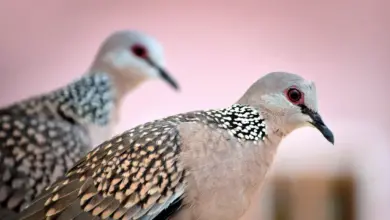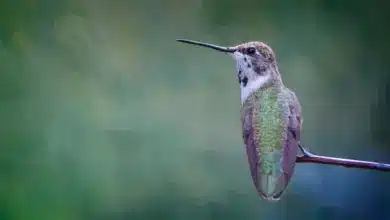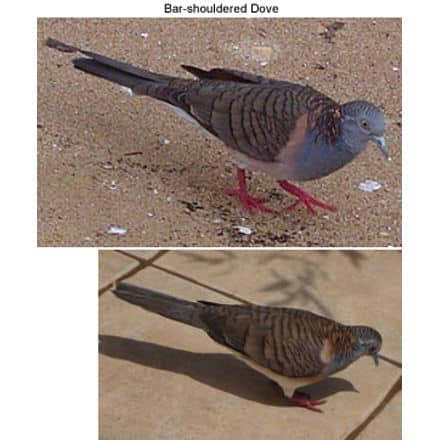Orange-breasted Sunbird, Anthobaphes collaris
The Orange-breasted Sunbird, Anthobaphes violacea, is a common sunbird that is endemic to the fynbos habitat of southwestern South Africa, but it also occurs in parks and gardens, where these small birds grow quite confiding.
They are altitudinal migrant, moving to higher altitudes during the southern summer in search of their favorite feeding flowers.
Outside the breeding season, they form large flocks of up to 100 birds.
It typically breeds in May – which is the peak growing season of their favorite feeding flower – the heath flowers.
During this time, the male aggressively defends his territory, attacking and chasing intruders.
Even though this species is not seriously threatened, it may be adversely affected by urbanization, agricultural and fynbos fires.
Description
Orange-breasted Sunbirds measure between 12.5 – 16.5 cm in length (including the tail). The male is generally larger, measuring between 14.5–16.5 cm; and the shorter-tailed female measures between 12.5–13.5 cm.
The adult male has a glossy green head and neck and an orange breast, bordered above with a narrow blue band, and shading to yellow on the lower belly. The upper parts are brown and the central tail feathers are elongated.
The female has an olive-yellow head and upperparts, and yellow underparts.
The juvenile resembles the female.
Diet / Feeding
The sunbirds feed largely on nectar, although they will also take insects, especially when feeding young.
They also feed on insects (often taken in flight) and spiders.
Sunbird flight is fast and most species can take nectar by hovering like a hummingbird.
However, they mostly feed by perching.
Their long thin down-curved bills and brush-tipped tubular tongues are perfectly adapted for retrieving nectar from the flowers.




